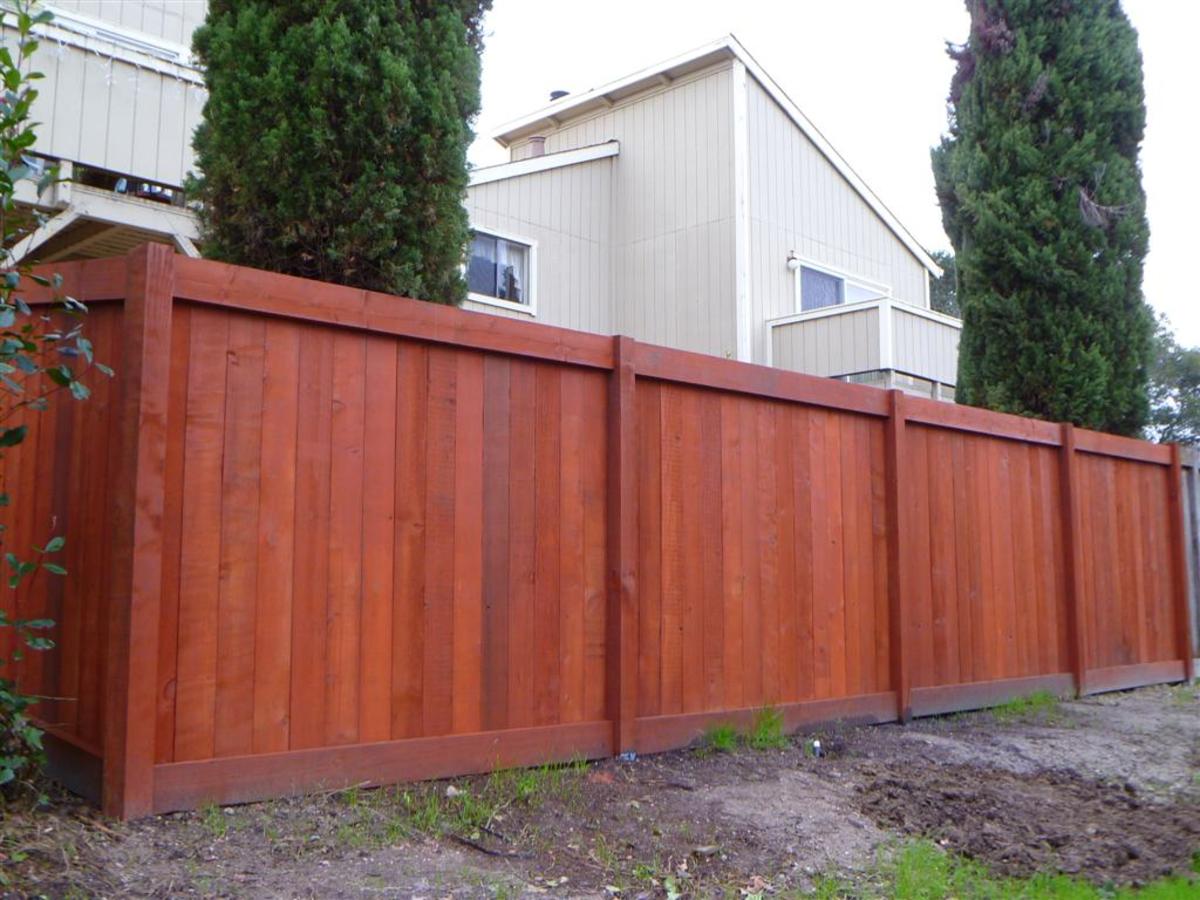Professional Fence Staining: Change Your Fence with Enduring Outcomes!
Professional Fence Staining: Change Your Fence with Enduring Outcomes!
Blog Article
How to Choose the Right Fence Discoloration for Your Residential Property
When it involves improving the appearance and durability of your property's fencing, choosing the right discolor is a vital decision that requires cautious consideration. With a myriad of alternatives offered in the market, each catering to different timber types, shades, and transparency degrees, the procedure can quickly come to be overwhelming. Making an informed selection can substantially impact the general appearances and longevity of your fencing. How can you make sure that you pick the perfect fencing stain that aligns with your residential property's design and maintenance demands? Allow's discover some key aspects to lead you in this decision-making procedure.
Recognizing Timber Types
To pick the ideal fence discolor, it is essential to have an extensive understanding of the different types of wood frequently utilized for fence. When picking a fence discolor, it is essential to think about the type of timber being made use of to make certain compatibility and optimum defense. Understanding the attributes of various wood types will assist you make a notified decision when it comes to choosing the right fencing tarnish for your home.
Choosing the Right Shade
Choosing a proper shade for your fence tarnish is a vital choice that substantially affects the overall visual appeal of your building. The color you select need to enhance the design of your home, blend harmoniously with the surroundings, and mirror your individual preference. When choosing a color, consider the existing shade combination of your property. For an all-natural look, earthy tones like browns, eco-friendlies, or grays function well. These colors can aid the fence blend right into the landscape and develop a cohesive look. If you choose a more contemporary or vibrant look, take into consideration going with darker tones like black or deep charcoal for a striking contrast. Lighter colors such as whites or light grays can make a fencing appear bigger and add a touch of sophistication to your residential or commercial property. Ultimately, the right shade selection will enhance the appeal of your fencing and elevate the general aesthetic charm of your home.

Considering Transparency Degrees
When choosing the right shade for your fencing discolor, another important aspect to take into consideration is the degree of transparency that will certainly finest match your residential property's aesthetic and maintenance requirements. Openness degrees in fence spots typically drop into three classifications: transparent, semi-transparent, and strong. Clear stains permit the natural beauty of the wood to show via while giving very little protection against the elements. They are perfect for brand-new or properly maintained fences where showcasing the wood grain is a top priority. Semi-transparent spots offer an equilibrium between shade enhancement and defense, enabling some wood grain to be visible while giving moderate securing from UV rays and dampness. Strong discolorations, on the other hand, supply the most security as they completely cover the timber with a nontransparent finish. These are ideal for older fences or those seeking considerable protection or shade change. Take into consideration the level of direct exposure your fence faces, the wanted upkeep regularity, and the visual you wish to attain when selecting the appropriate openness degree for your fence tarnish.
Assessing Maintenance Needs
Considering the durability and maintenance of your fencing, assessing the maintenance demands is vital in identifying the most ideal fencing tarnish for your home. The level of maintenance needed for your fence can vary depending on elements such as the kind of timber, climate condition in your area, and your individual choices.
When reviewing upkeep needs, it is necessary to consider the sturdiness of the fence stain. Some spots need even more regular reapplication than others, so choosing a stain with a longer life expectancy can help in reducing the total upkeep demands of your fence (Fence Staining). In addition, elements such as resistance to UV rays, water, and mildew can impact how often you require to re-stain your fence

Evaluating Examples Before Application
Before applying any type of fence tarnish, it is advisable to carry out sample tests to make sure compatibility with the timber and desired aesthetic outcome (Fence Staining Nashville TN). Testing samples permits you to assess exactly how the stain will engage with the specific type of timber made use of in your fencing, as different woods can take in discolorations in different ways. To begin, choose a tiny unnoticeable location of the fence to apply the discolor examples. It is why not try here suggested to check numerous stain choices on this section to compare colors and finishes. Consider exactly how the discolor looks when dry, as it may show up different from its wet application. Additionally, observe just how the discolor matches the existing aspects in your outside space, such as landscaping or the shade of your home. Take note of how the stain stands up to weather problems like sunlight and dampness. By evaluating examples prior to full application, you can make an educated choice that enhances the total appearance of your residential or commercial property while safeguarding the timber efficiently.
Conclusion
To conclude, selecting the suitable fencing discolor for your home involves comprehending the wood kind, choosing the ideal color, considering transparency degrees, assessing upkeep requirements, and testing samples before application (Fence Staining). By taking these variables into consideration, you can make certain that your fence discolor enhances your residential or commercial property while providing the required security and durability. Make an educated choice to improve the look and longevity of your fence
Report this page